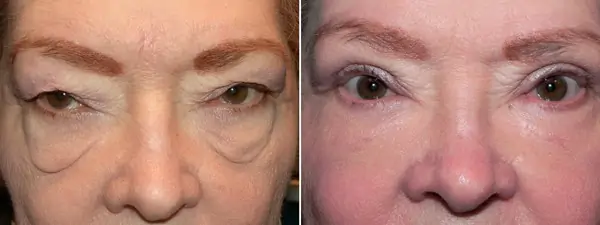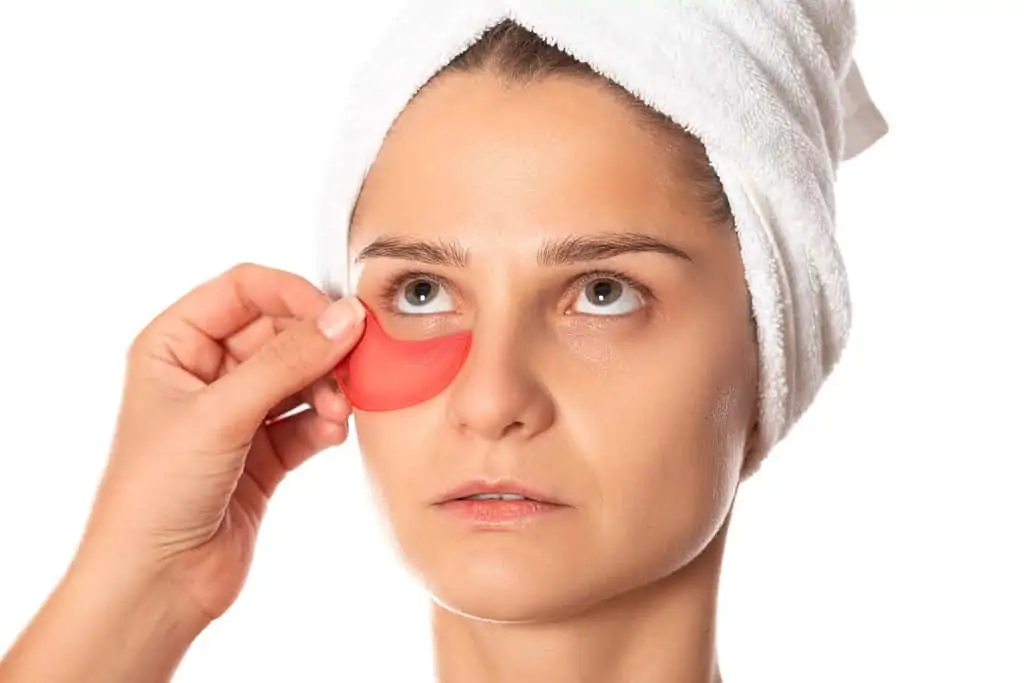What are festoons and how do you know you have them? Do people often say you look tired or sick, when you actually feel great? They go by many names ranging from puffy eyes, to severe bags under the eyelids, but the medical term for skin folds in the lower eyelids is “festoon” or “malar mound.”
The multitude for names may have something to do with the fact that festoons aren’t well understood by the public, according to Adam J. Scheiner, M.D., an international eyelid and facial cosmetic surgeon who has been featured on “The Dr. Oz. Show” and “The Doctors.”
What are festoons?
There’s a lack of awareness around festoons that often causes them to be misdiagnosed, and the error isn’t simply a vanity issue.
While many people who suffer from this condition may consider it simply an unpleasant sign of aging, festoons not only can cause a dramatic aesthetic disturbance, but can lead to peripheral vision loss in severe cases.
Festoons can also be a market for pre-cancerous skin conditions on other parts of the face, which is another good reason to learn what to look for in festoons.

Differences Between Bags and Festoons
There are such things as “bags” which often appear as puffy circles directly beneath the eye. Malar Bags occur when fluid or fat in the lower eyelid area protrudes through the skin.
“If you touch them, they’re usually firmer, and you can’t easily move them from side to side. That’s an indication they’re ‘bags,'” Dr. Scheiner says. “Also, if you look up, they become more prominent.”
Festoons under eyes are lower, mostly protruding from the upper part of the cheek instead. Festoons are often made worse by age with loss of bone and fat below the muscle of the lower eyelid.
Sometimes you have both and while having eye bags and festoons together can look like just one big protrusion, they’re actually separate issues.
What Causes Festoons?
Factors ranging from sun exposure, smoking, genetics and aging can all cause a structural problem beneath the surface of the eyelid.
With time and exposure to the sun, underlying muscle-forces cause stress in the overlying skin under the eyes, causing a subtle but progressive damage to the elastic fibers in the skin.
This leads to different amounts to swelling or puffiness during different times of the days or month.

Many often consider the puffiness to be a sign of “bags,” but considering the cause of festoons, eye creams, gels and other treatments will be completely ineffective against festoons, as topical products cannot cure the problem of herniated tissue and structural problems.
How To Get Rid of Festoons
Until recently, surgical removal, oral diuretics and steroid injections were the primary treatments for festoons, but these procedures would yield minimal and often temporary results.
“Festoons have been a difficult medical problem for many patients and their physicians over the years,” says Dr. Scheiner. “Traditional surgeries have had less-than-optimal results on this condition.
Taking advantage of the latest advances in laser application and wound healing, it’s now possible to dramatically improve this difficult eyelid condition by applying this technique.”
With the growing understanding of festoons, many eyelid and facial cosmetic surgeons are specializing in the treatment of festoon eye, like Dr. Scheiner.
He specializes in both correct treatments that have been done elsewhere, such as fillers and lower eyelid surgeries that didn’t address patients’ festoons, while offering laser skin resurfacing procedures.
In his popular blog, and in his new book, The True Definition of Beauty, people can learn more about festoons and gain an understanding if this malady is something they suffer from.
“The lack of awareness around Festoons and how ubiquitous they are — and how often they are misdiagnosed — is why my practice has executed an educational marketing campaign to bring clarity to combat the misinformation and confusion surrounding this condition,” he adds.
I’m a new mom and developed dark rings and puffiness from the continuous lack of sleep and long nights. After using dermalmd under eye serum I’m seeing a decrease in my puffiness and dark rings in just a week. And, to my surprise, I’m also seeing a drastic improvement in my spider vein cherry that’s been in my under eye area for years (it’s reduced in size and redness quite a bit).
That’s incredible! I’m so happy for you :)